Y. Zhang
Highly Efficient and Unsupervised Framework for Moving Object Detection in Satellite Videos
Nov 24, 2024Abstract:Moving object detection in satellite videos (SVMOD) is a challenging task due to the extremely dim and small target characteristics. Current learning-based methods extract spatio-temporal information from multi-frame dense representation with labor-intensive manual labels to tackle SVMOD, which needs high annotation costs and contains tremendous computational redundancy due to the severe imbalance between foreground and background regions. In this paper, we propose a highly efficient unsupervised framework for SVMOD. Specifically, we propose a generic unsupervised framework for SVMOD, in which pseudo labels generated by a traditional method can evolve with the training process to promote detection performance. Furthermore, we propose a highly efficient and effective sparse convolutional anchor-free detection network by sampling the dense multi-frame image form into a sparse spatio-temporal point cloud representation and skipping the redundant computation on background regions. Coping these two designs, we can achieve both high efficiency (label and computation efficiency) and effectiveness. Extensive experiments demonstrate that our method can not only process 98.8 frames per second on 1024x1024 images but also achieve state-of-the-art performance. The relabeled dataset and code are available at https://github.com/ChaoXiao12/Moving-object-detection-in-satellite-videos-HiEUM.
* 8 pages, 8 figures
On Propagation Characteristics of Reconfigurable Surface-Wave Platform: Simulation and Experimental Verification
Apr 27, 2023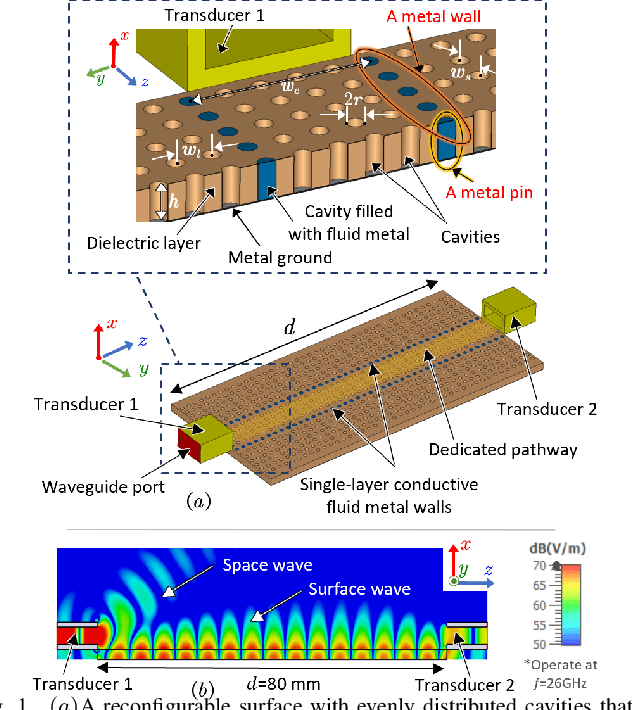
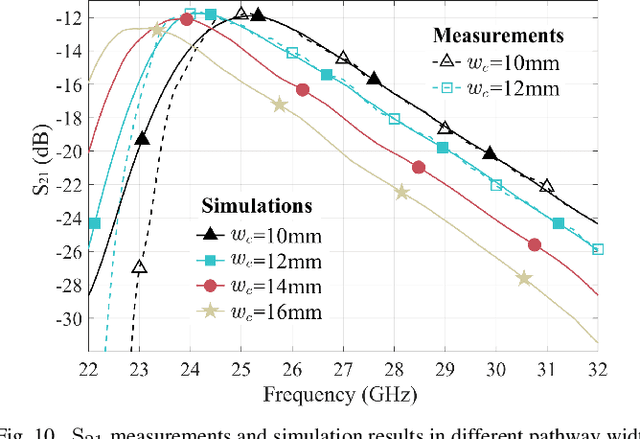
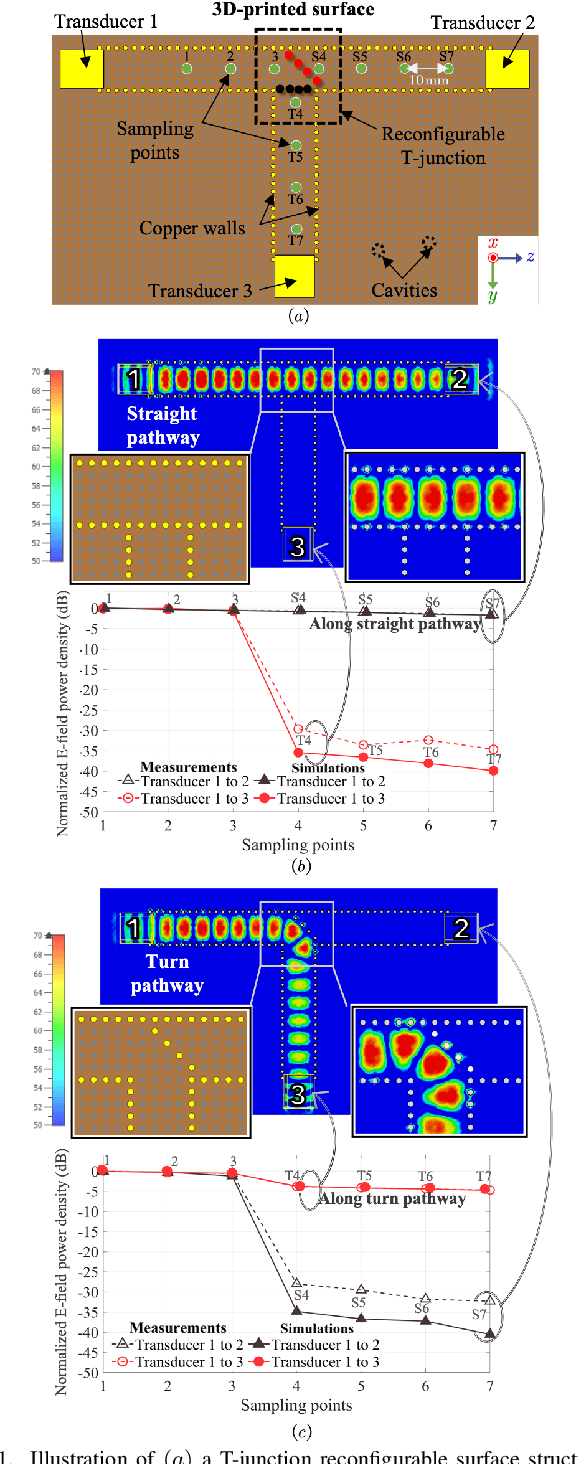

Abstract:Reconfigurable intelligent surface (RIS) as a smart reflector is revolutionizing research for next-generation wireless communications. Complementing this is a concept of using RIS as an efficient propagation medium for potentially superior path loss characteristics. Motivated by a recent porous surface architecture that facilitates reconfigurable pathways with cavities filled with fluid metal, this paper studies the propagation characteristics of different pathway configurations and evaluates the reconfigurable surface-wave platform by using a commercial full electromagnetic simulation software and experiments. This paper also looks into the best scheme to switch between a straight pathway and a $90^\circ$-turned pathway and attempts to quantify the additional path loss when making a turned pathway. Our experimental results verify the simulation results, showing the effectiveness of the proposed reconfigurable surface-wave platform for a wide-band, low path loss and highly controllable communication.
Tac2Structure: Object Surface Reconstruction Only through Multi Times Touch
Sep 14, 2022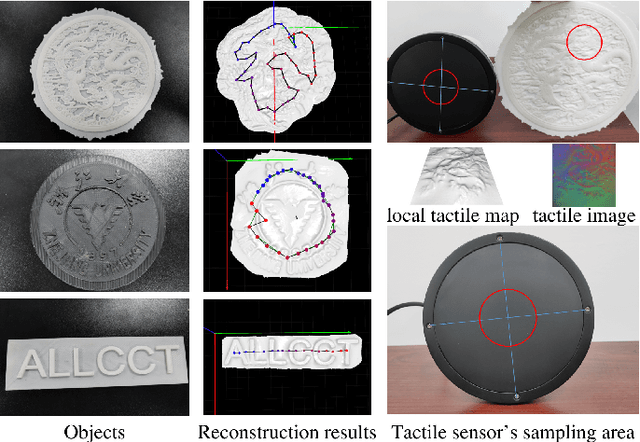
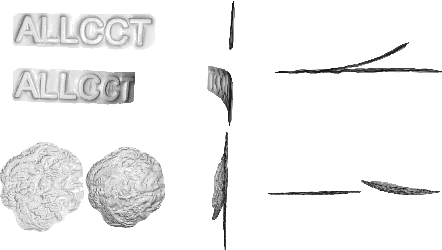


Abstract:Inspired by the ability of humans to perceive the surface texture of unfamiliar objects without relying on vision, the sense of tactile can play a crucial role in the process of robots exploring the environment, especially in some scenes where vision is difficult to apply or occlusion is inevitable to exist. Existing tactile surface reconstruction methods rely on external sensors or have strong prior assumptions, which will limit their application scenarios and make the operation more complex. This paper presents a surface reconstruction algorithm that uses only a new vision-based tactile sensor where the surface structure of an unfamiliar object is reconstructed by multiple tactile measurements. Compared with existing algorithms, the proposed algorithm doesn't rely on external devices and focuses on improving the reconstruction accuracy of the large-scale object surface. Aiming at the difficulty that the reconstruction accuracy is easily affected by the pressure of sampling, we propose a correction algorithm to adapt it. Multi-frame tactile imprints generated from many times contact can accurately reconstruct global object surface by jointly using the point cloud registration algorithm, loop-closure detection algorithm based on deep learning, and pose graph optimization algorithm. Experiments verify the proposed algorithm can achieve millimeter-level accuracy in reconstructing the surface of interactive objects and provide accurate tactile information for the robot to perceive the surrounding environment.
AI-assisted Optimization of the ECCE Tracking System at the Electron Ion Collider
May 20, 2022Abstract:The Electron-Ion Collider (EIC) is a cutting-edge accelerator facility that will study the nature of the "glue" that binds the building blocks of the visible matter in the universe. The proposed experiment will be realized at Brookhaven National Laboratory in approximately 10 years from now, with detector design and R&D currently ongoing. Notably, EIC is one of the first large-scale facilities to leverage Artificial Intelligence (AI) already starting from the design and R&D phases. The EIC Comprehensive Chromodynamics Experiment (ECCE) is a consortium that proposed a detector design based on a 1.5T solenoid. The EIC detector proposal review concluded that the ECCE design will serve as the reference design for an EIC detector. Herein we describe a comprehensive optimization of the ECCE tracker using AI. The work required a complex parametrization of the simulated detector system. Our approach dealt with an optimization problem in a multidimensional design space driven by multiple objectives that encode the detector performance, while satisfying several mechanical constraints. We describe our strategy and show results obtained for the ECCE tracking system. The AI-assisted design is agnostic to the simulation framework and can be extended to other sub-detectors or to a system of sub-detectors to further optimize the performance of the EIC detector.
Joint User Scheduling and Beamforming Design for Multiuser MISO Downlink Systems
Dec 03, 2021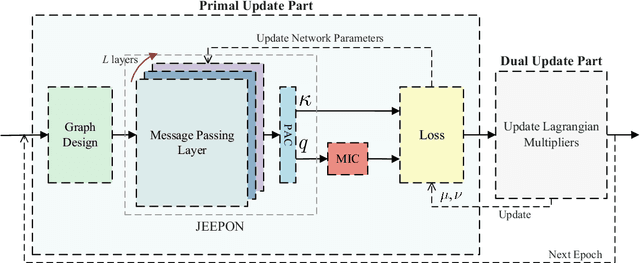
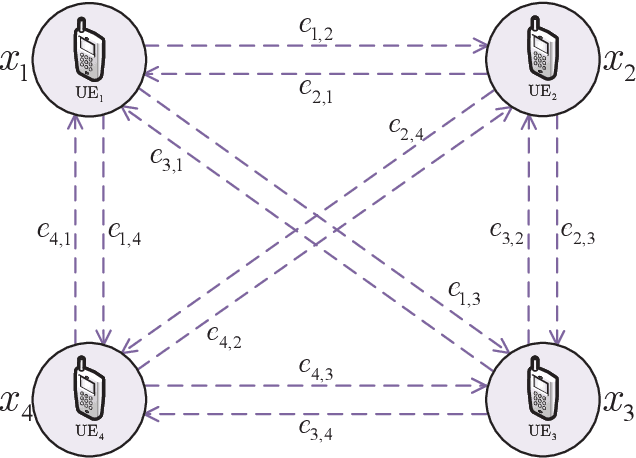
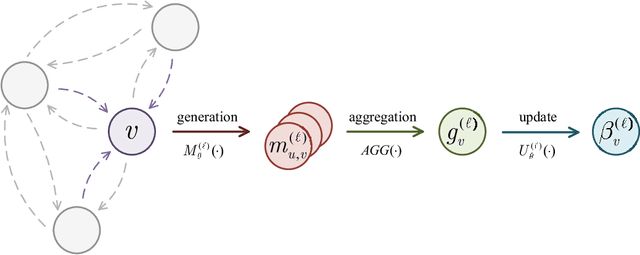
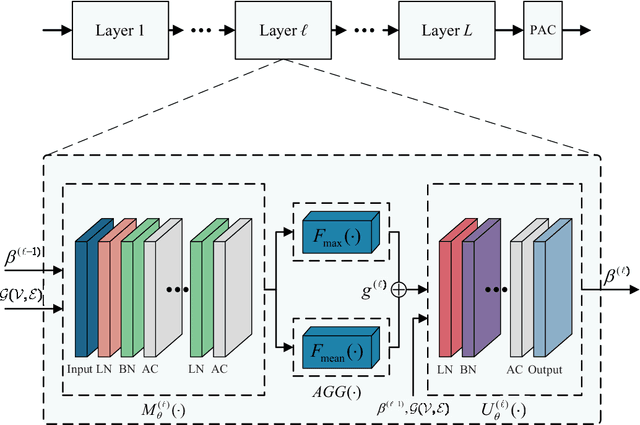
Abstract:In multiuser communication systems, user scheduling and beamforming design are two fundamental problems, which are usually investigated separately in the existing literature. In this work, we focus on the joint optimization of user scheduling and beamforming design with the goal of maximizing the set cardinality of scheduled users. Observing that this problem is computationally challenging due to the non-convex objective function and coupled constraints in continuous and binary variables. To tackle these difficulties, we first propose an iterative optimization algorithm (IOA) relying on the successive convex approximation and uplink-downlink duality theory. Then, motivated by IOA and graph neural networks, a joint user scheduling and power allocation network (JEEPON) is developed to address the investigated problem in an unsupervised manner. The effectiveness of IOA and JEEPON is verified by various numerical results, and the latter achieves a close performance but lower complexity compared with IOA and the greedy-based algorithm. Remarkably, the proposed JEEPON is also competitive in terms of the generalization ability in dynamic wireless network scenarios.
Detecting intracranial aneurysm rupture from 3D surfaces using a novel GraphNet approach
Oct 17, 2019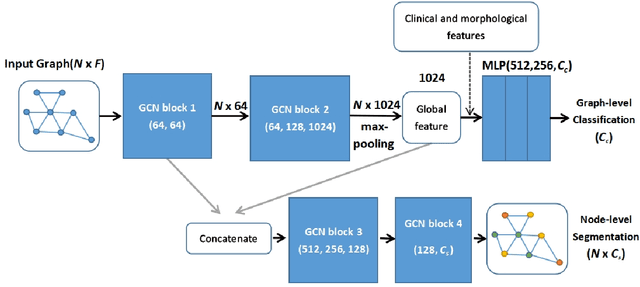
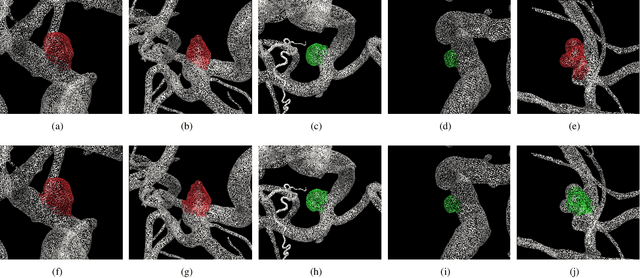
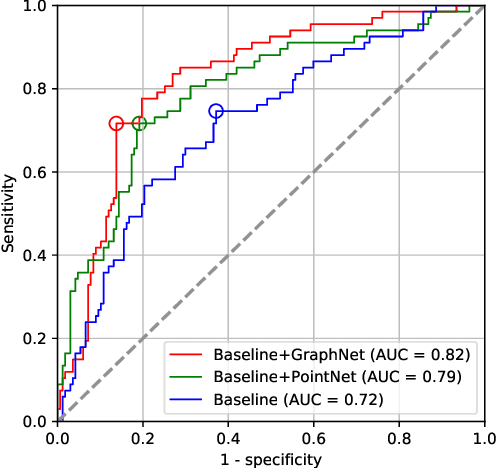
Abstract:Intracranial aneurysm (IA) is a life-threatening blood spot in human's brain if it ruptures and causes cerebral hemorrhage. It is challenging to detect whether an IA has ruptured from medical images. In this paper, we propose a novel graph based neural network named GraphNet to detect IA rupture from 3D surface data. GraphNet is based on graph convolution network (GCN) and is designed for graph-level classification and node-level segmentation. The network uses GCN blocks to extract surface local features and pools to global features. 1250 patient data including 385 ruptured and 865 unruptured IAs were collected from clinic for experiments. The performance on randomly selected 234 test patient data was reported. The experiment with the proposed GraphNet achieved accuracy of 0.82, area-under-curve (AUC) of receiver operating characteristic (ROC) curve 0.82 in the classification task, significantly outperforming the baseline approach without using graph based networks. The segmentation output of the model achieved mean graph-node-based dice coefficient (DSC) score 0.88.
Data-driven Policy on Feasibility Determination for the Train Shunting Problem
Jul 10, 2019



Abstract:Parking, matching, scheduling, and routing are common problems in train maintenance. In particular, train units are commonly maintained and cleaned at dedicated shunting yards. The planning problem that results from such situations is referred to as the Train Unit Shunting Problem (TUSP). This problem involves matching arriving train units to service tasks and determining the schedule for departing trains. The TUSP is an important problem as it is used to determine the capacity of shunting yards and arises as a sub-problem of more general scheduling and planning problems. In this paper, we consider the case of the Dutch Railways (NS) TUSP. As the TUSP is complex, NS currently uses a local search (LS) heuristic to determine if an instance of the TUSP has a feasible solution. Given the number of shunting yards and the size of the planning problems, improving the evaluation speed of the LS brings significant computational gain. In this work, we use a machine learning approach that complements the LS and accelerates the search process. We use a Deep Graph Convolutional Neural Network (DGCNN) model to predict the feasibility of solutions obtained during the run of the LS heuristic. We use this model to decide whether to continue or abort the search process. In this way, the computation time is used more efficiently as it is spent on instances that are more likely to be feasible. Using simulations based on real-life instances of the TUSP, we show how our approach improves upon the previous method on prediction accuracy and leads to computational gains for the decision-making process.
On stochastic gradient Langevin dynamics with dependent data streams in the logconcave case
Dec 06, 2018Abstract:Stochastic Gradient Langevin Dynamics (SGLD) is a combination of a Robbins-Monro type algorithm with Langevin dynamics in order to perform data-driven stochastic optimization. In this paper, the SGLD method with fixed step size $\lambda$ is considered in order to sample from a logconcave target distribution $\pi$, known up to a normalisation factor. We assume that unbiased estimates of the gradient from possibly dependent observations are available. It is shown that, for all $\varepsilon>0$, the Wasserstein-$2$ distance of the $n$th iterate of the SGLD algorithm from $\pi$ is dominated by $c_1(\varepsilon)[\lambda^{1/2 - \varepsilon}+e^{-a\lambda n}]$ with appropriate constants $c_1(\varepsilon), a>0$.
CTL Model Update for System Modifications
Oct 31, 2011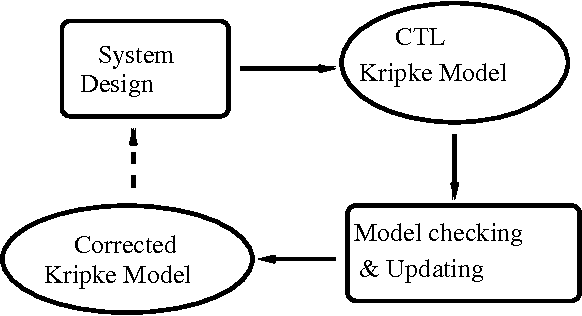
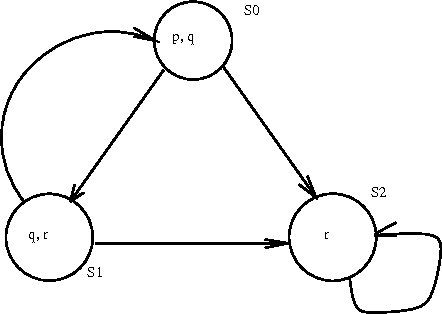
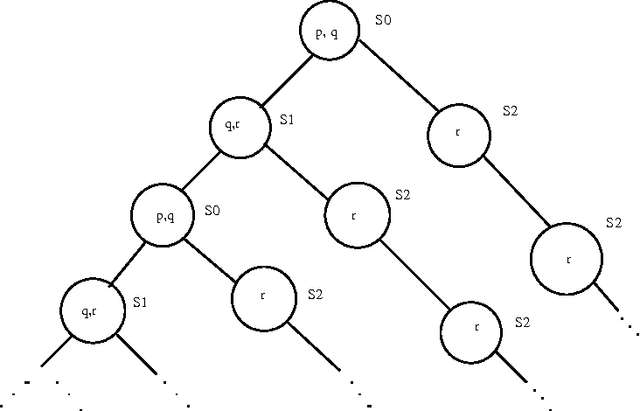
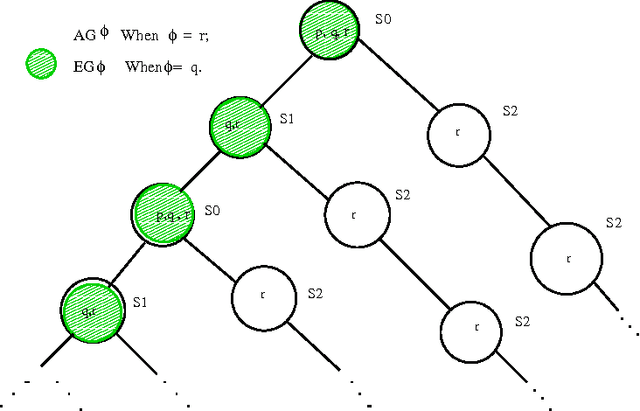
Abstract:Model checking is a promising technology, which has been applied for verification of many hardware and software systems. In this paper, we introduce the concept of model update towards the development of an automatic system modification tool that extends model checking functions. We define primitive update operations on the models of Computation Tree Logic (CTL) and formalize the principle of minimal change for CTL model update. These primitive update operations, together with the underlying minimal change principle, serve as the foundation for CTL model update. Essential semantic and computational characterizations are provided for our CTL model update approach. We then describe a formal algorithm that implements this approach. We also illustrate two case studies of CTL model updates for the well-known microwave oven example and the Andrew File System 1, from which we further propose a method to optimize the update results in complex system modifications.
Set Intersection and Consistency in Constraint Networks
Oct 10, 2011



Abstract:In this paper, we show that there is a close relation between consistency in a constraint network and set intersection. A proof schema is provided as a generic way to obtain consistency properties from properties on set intersection. This approach not only simplifies the understanding of and unifies many existing consistency results, but also directs the study of consistency to that of set intersection properties in many situations, as demonstrated by the results on the convexity and tightness of constraints in this paper. Specifically, we identify a new class of tree convex constraints where local consistency ensures global consistency. This generalizes row convex constraints. Various consistency results are also obtained on constraint networks where only some, in contrast to all in the existing work,constraints are tight.
 Add to Chrome
Add to Chrome Add to Firefox
Add to Firefox Add to Edge
Add to Edge